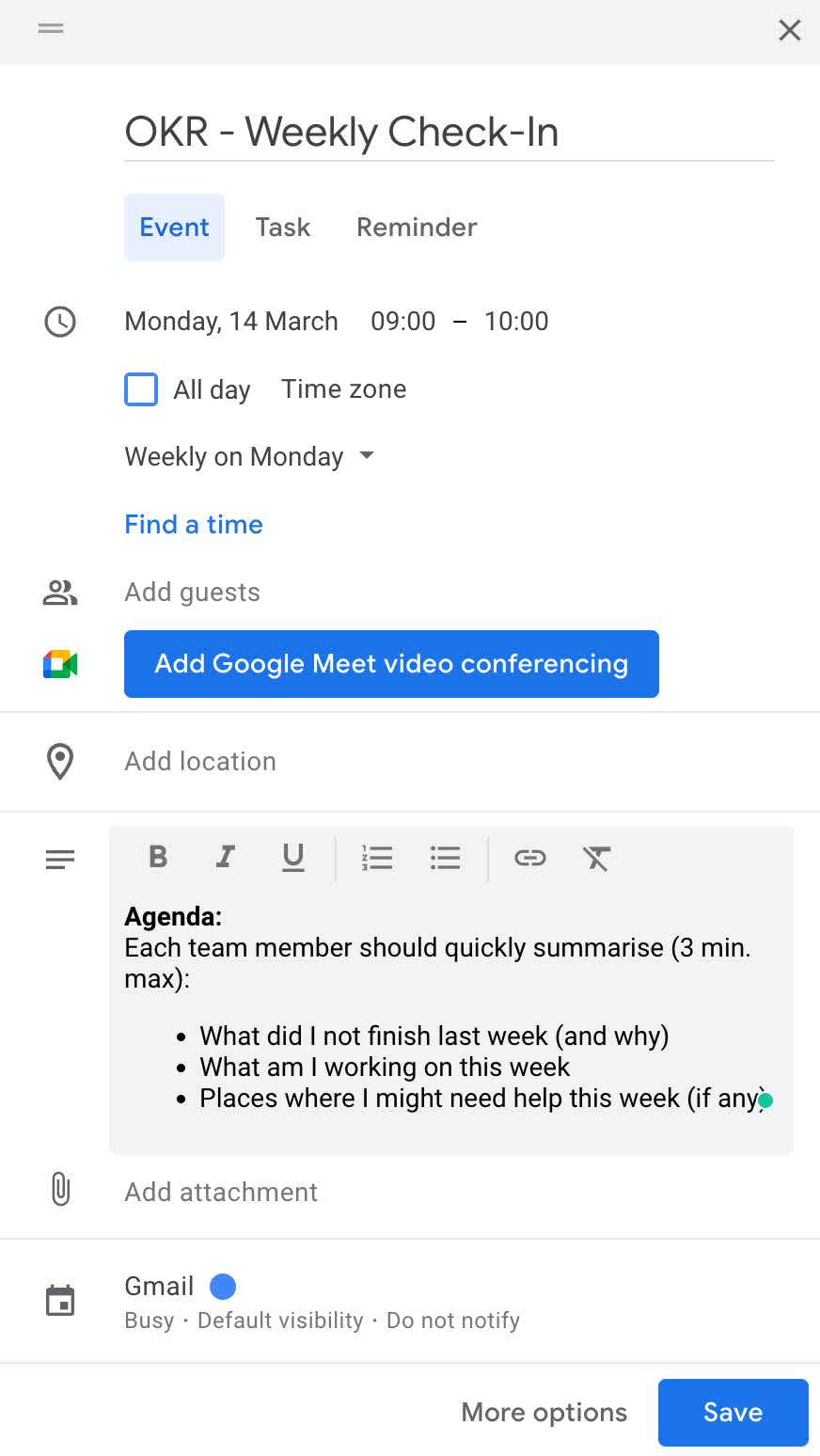How To Run Efficient OKR Meetings
OKR meetings can be some of the most useful meetings if done correctly. Read more to learn how to get the most out of them.

Lasse Ravn
Last updated on January 3rd, 2023

While it’s easy just to plan daily, weekly, monthly, and quarterly OKR meetings, the point of OKRs is to achieve the exact opposite. Meetings should be short, attendants well prepared, and the meeting agenda should be to the point. If attendants don’t see a clear purpose of the meeting, they should speak up and it should be either revised if the meeting needs to be held at all or it should be canceled.
This post will cover how to have the best OKR meetings and the meeting structure that allows teams to be most efficient. Few people love meetings without a clear-cut purpose, so we’ll help you create one in the following sections.
OKR Meeting Agenda
Before inviting your team to your first meetings, you should prepare a meeting agenda that will help invitees to prepare themselves for the meeting. If you’ve just implemented OKR, you should send a follow-up message to team members before the meeting, asking them if they’ve understood the contents of the meeting and how they should prepare. Because they should!
The OKR cycle contains different meetings with different purposes:
OKR cycle meeting (what are we working on next cycle)
OKR kickoff meeting (introducing everyone to next cycle focus)
OKR weekly meeting (what are we working on this week)
OKR daily standup meeting (how are we progressing on this week’s work)
What we’ll focus on here is the weekly meeting since it’s the one held most frequently, which still requires significant preparation and takes a bit more time than the daily standup meetings.
Before heading into this meeting, we need to align on the work that has been done prior to it being held. You should already know:
Company objectives
Team objectives
Key results of the current cycle
Team member allocation to key results
By knowing these, we can focus on the purpose of this exact meeting type; making sure we reflect on last week’s work, including what we achieved and what we didn’t (and why), and presenting what we’ll focus on this week to move closer to reaching our objectives. Remember, this is where the initiatives come into the picture. These drive the day-to-day work and largely dictate what work should be done.
The agenda could then be sent out with the meeting notification and contain something similar to this:

Agenda:
Each team member should quickly summarise (3 min. max):
What did I not finish last week (and why)
What am I working on this week
Places where I might need help this week (if any)
Doing a write-up after the meeting
After the meeting is done, team members start their week and begin working on their tasks for the week. But one thing should happen before that.
Presenting to the rest of the team what you’ll work on is easy, but actually writing it down for everyone to see is something else. Something I’ve seen done is a short Slack update from each team member about what they’ll be working on. This should of course be done in a muted Slack channel, or somewhere else where it doesn’t disturb anyone.
The main point here is that letting everyone know what you work on creates transparency, it allows for knowledge sharing and it makes it very easy for people to review their past week’s work.
This could also easily be done in a project management tool, preferably before the OKR meeting, so that team members have gone through the exercise of thinking one extra time about the things they’re about to present to the rest of the team.
Meetings can be tough. Pointless meetings can be even tougher. In an increasingly remote work culture, these meetings very quickly show if they’re needed or not. So as a team leader or manager, you should think a lot more about preparation and the agendas of the meeting.
We hope this post helped you gain a better overview of how to think about the meeting structure of the weekly OKR meeting and how you can achieve the most with it.